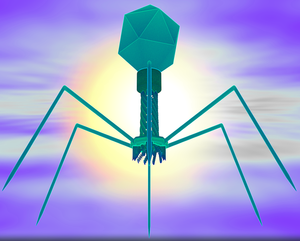Difference between revisions of "Virus"
| Line 17: | Line 17: | ||
==Beyond the Curriculum== | ==Beyond the Curriculum== | ||
{{#ev:youtube|https://www.youtube.com/watch?v=oqGuJhOeMek}} | {{#ev:youtube|https://www.youtube.com/watch?v=oqGuJhOeMek}} | ||
| + | |||
| + | ===References=== | ||
| + | ====AQA==== | ||
| + | |||
| + | :[https://www.amazon.co.uk/gp/product/0008158754/ref=as_li_tl?ie=UTF8&camp=1634&creative=6738&creativeASIN=0008158754&linkCode=as2&tag=nrjc-21&linkId=27ad53b0283feeff7fc5ae04a9e205f601 ''Virus, pages 129, 138-41, 300, 304, GCSE Biology; Student Book, Collins, AQA ''] | ||
| + | :[https://www.amazon.co.uk/gp/product/1782946381/ref=as_li_tl?ie=UTF8&camp=1634&creative=6738&creativeASIN=1782946381&linkCode=as2&tag=nrjc-21&linkId=5ec5fc3f6429e30c1d9ab9bca2bccf93 ''Viruses, pages 124, 126, GCSE Combined Science Trilogy; Biology, CGP, AQA ''] | ||
| + | :[https://www.amazon.co.uk/gp/product/1782945954/ref=as_li_tl?ie=UTF8&camp=1634&creative=6738&creativeASIN=1782945954&linkCode=as2&tag=nrjc-21&linkId=100574c08fbbb64318256eb79ed61a76 ''Viruses, pages 130, 132, GCSE Biology, CGP, AQA ''] | ||
| + | :[https://www.amazon.co.uk/gp/product/1782945598/ref=as_li_tl?ie=UTF8&camp=1634&creative=6738&creativeASIN=1782945598&linkCode=as2&tag=nrjc-21&linkId=ad276ad49df77ab4b40ab4fd0fe10404 ''Viruses, pages 42, 44, GCSE Combined Science; The Revision Guide, CGP, AQA ''] | ||
| + | :[https://www.amazon.co.uk/gp/product/1782945563/ref=as_li_tl?ie=UTF8&camp=1634&creative=6738&creativeASIN=1782945563&linkCode=as2&tag=nrjc-21&linkId=9a1d023a374038e6072f33c4f3cf808b ''Viruses, pages 46, 47, GCSE Biology; The Revision Guide, CGP, AQA ''] | ||
| + | :[https://www.amazon.co.uk/gp/product/0198359373/ref=as_li_tl?ie=UTF8&camp=1634&creative=6738&creativeASIN=0198359373&linkCode=as2&tag=nrjc-21&linkId=952a73bbb09d222ecc4b50d200679849 ''Viruses, pages 76-77, 84-85, 115, GCSE Biology; Third Edition, Oxford University Press, AQA ''] | ||
Revision as of 19:01, 14 November 2019
Contents
Key Stage 4

A clipart image of a virus.
Meaning
A virus is a type pathogen that can infect individual cells in an organism.
About Viruses
- Viruses are made from a strand of DNA or RNA and a protein sheath.
- Viruses cannot reproduce outside a host cell so they are not considered to be alive.
- When a virus comes in contact with a target cell it attaches itself to the cell membrane and then injects its DNA (or RNA) into the cell. Once this is done the DNA causes the cell to start making copies of the virus. When millions of copies have been made they burst out, killing the cell. These millions of viruses can then go on to infect other cells.
- Different viruses can only attach themselves to certain types of cell, so they can all have very different effects on the organism depending on which type of cell they infect.
Examples
- The measles virus causes causes a rash, blindness and brain damage.
- HIV causes a disease called AIDS which has the symptoms of a weakened immune system which leads to other infections.
- Tobacco Mosaic Virus is a virus which causes Tomato Plants and Tobacco Plants to grow slowly.
Beyond the Curriculum
References
AQA
- Virus, pages 129, 138-41, 300, 304, GCSE Biology; Student Book, Collins, AQA
- Viruses, pages 124, 126, GCSE Combined Science Trilogy; Biology, CGP, AQA
- Viruses, pages 130, 132, GCSE Biology, CGP, AQA
- Viruses, pages 42, 44, GCSE Combined Science; The Revision Guide, CGP, AQA
- Viruses, pages 46, 47, GCSE Biology; The Revision Guide, CGP, AQA
- Viruses, pages 76-77, 84-85, 115, GCSE Biology; Third Edition, Oxford University Press, AQA